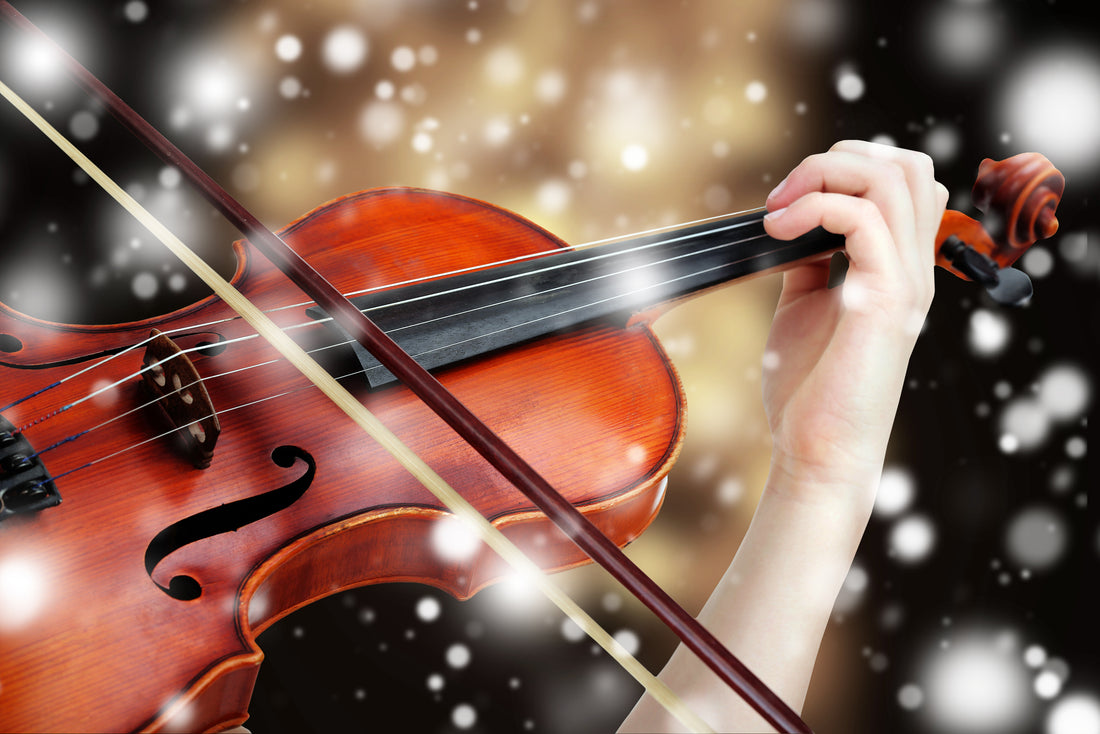
Is Your Wooden Musical Instrument Prepared for the Upcoming Cold Weather?
Share
Winter is definitely here, and temperatures have dropped all over the country. While cold weather brings all sorts of exciting things (hot chocolate, comforting food, and don’t forget about snow days!), one downside for all you musicians out there is the effect it can have on your wood instrument. Cold weather can have an impact on many different instruments, but instruments made of wood are the most susceptible (in the next paragraph you’ll find out why!). Luckily, there are several precautions you can take to keep your instrument in great shape throughout the chilly season.

How can a dip in temperature cause damage to your wood instrument?
Wood is a material that expands while in hot temperatures and high humidity and shrinks in cold temperatures and low humidity. Usually crafted out of several types of wood, this shrinking and swelling can occur in different parts of the instrument. A special “hide” glue holds wood instruments together, so that if the wood shrinks or swells too much rather than the body of the instrument breaking the glue merely shatters, minimizing more serious damage. Cold and dry conditions during winter can have a variety of consequences for your musical instrument. One of the most common is for your instrument to become out of tune more often. Pegs on stringed instruments can also become loose when wood shrinks. These instances may be a nuisance, but both are easily remedied. Warping and cracking however are much more costly issues to fix, so it is important to learn proper seasonal care for your instrument to avoid damages.
How can I prevent these weather- related damages?
-When it is not being played, keep your instrument in its case to protect it. An in-case hygrometer can measure the humidity of your instrument to help you maintain an appropriate level (which is normally between 30-50%). You need to have a hygrometer if you use an in-case humidifier. An insulated case is also a good option.
-Make sure your instrument is stored at the right humidity levels. You may want to keep a humidifier in the area where your instrument is stored if the air is too dry (just be sure to not add too much humidity!). Do not store near drafty windows, doors, or in cold basements.
-Don’t leave your instrument in a cold vehicle overnight.
-When travelling with a wood instrument, keep it in the car with you rather than in the cold trunk.
-Store your instrument in a silk cover, which helps prevent moisture loss.
If your instrument has been exposed to freezing temperatures, carefully acclimate it to warmer temperatures. To avoid warping or cracking, do not try to heat it up quickly with a heater, warm air, or other source of heat. Pay extra attention to the condition of your instrument during fluctuating temperatures and especially during the winter weather months. If your instrument does become damaged, call us with your questions or bring it by Golden Music for an estimate and we’ll help you get back to playing in no time!
By Laura Whitlock-Nashville Band
